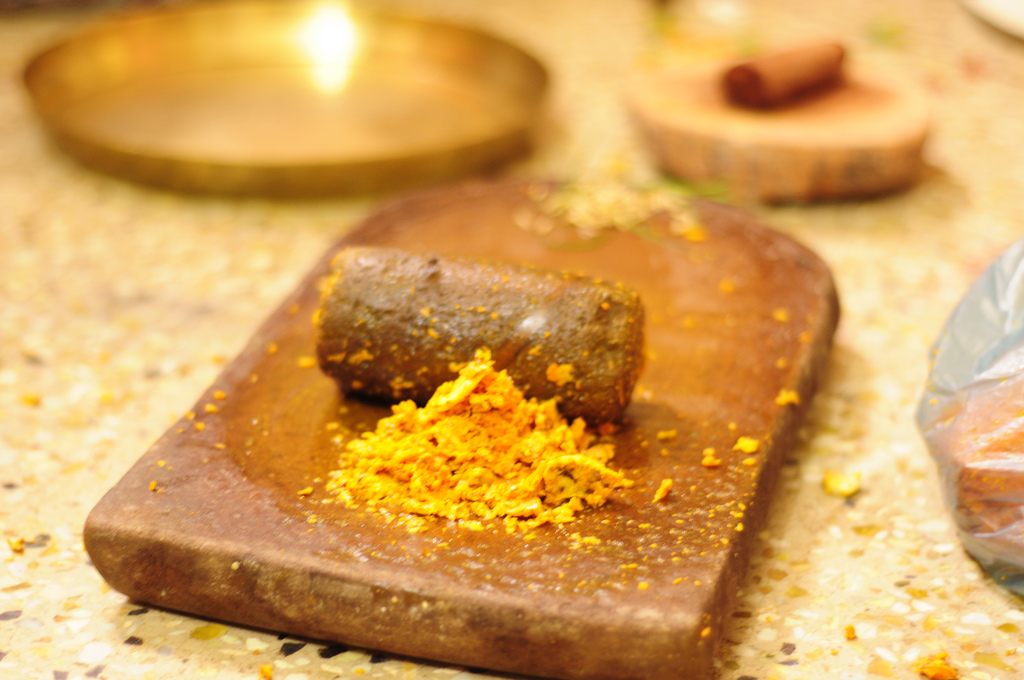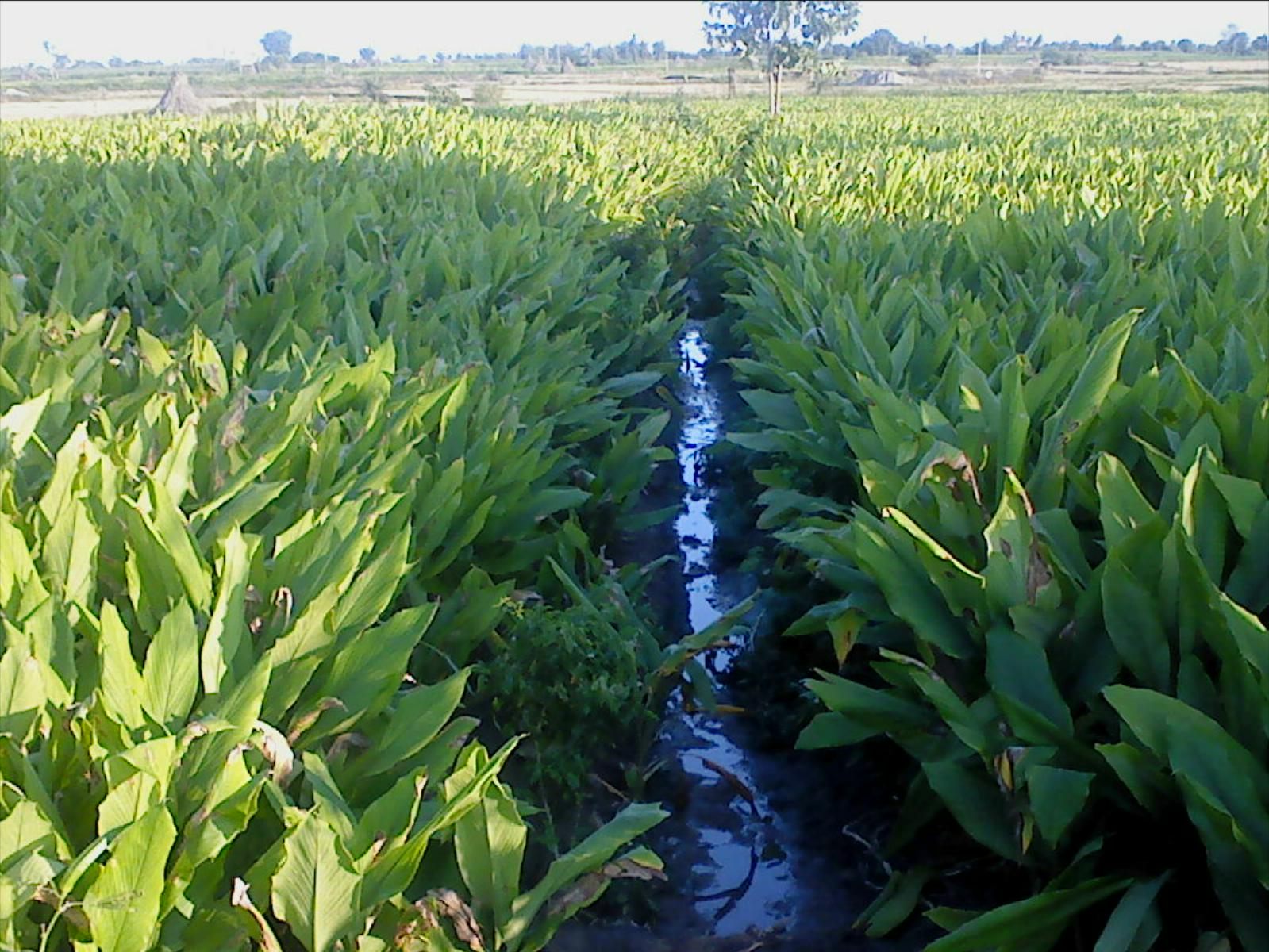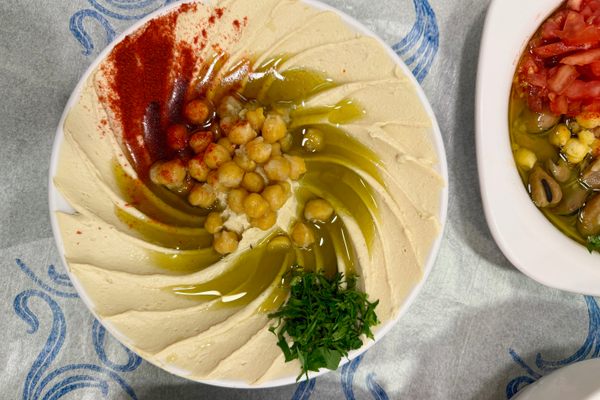How Turmeric Became a Cure-All Product in India
The West’s current health food trend is the subcontinent’s millennia-old staple.

Freshly-ground turmeric, which is bright yellow in hue. (Photo: saptarshikar/CC BY-ND 2.0)
At Brooklyn juicery Botica & Co, you can stop by on your way to a yoga session and grab a $5 Turmeric Shot, which contains fresh turmeric, lemon, ginger and turmeric elixir. Throughout the U.S., health food stores and delis stock a range of Temple Turmeric juice blends, which were created after the company’s founder traveled to Hawaii in 2008 and “discovered the life-changing and healing power of raw, organic turmeric.”
Turmeric is trendy. In the West it has recently entered the health-and-wellness spotlight, both as health fad and home-remedy—a Google search for DIY wound care shows turmeric is one of the favored pantry items for healing cuts. But the concept of turmeric-as-healing-remedy isn’t new. It seems as though our modern-day ritual of using turmeric for its health benefits echoes its use in Indian civilizations going all the way back to 3,000 years ago.
The vividly yellow powder you can buy at the grocery store derives from the root of the turmeric plant, also known as the Curcuma domestica. The broad-leafed plant contains pinecone-shaped stalks and bulbous roots that look like ginger, although once you cut into the root you’ll find a fleshy yellow interior. The root is boiled, dried, and ground down into a fragrant yellow powder, which has a pungent, slightly bitter flavor.

Turmeric plants growing in a field in Kothapally, India. (Photo: Rajkumar6182/CC0)
C. domestica is native to South Asia, and has been cultivated there for thousands of years. It is frequently mentioned in ancient Hindu literature. For example, it is cited in an early Sanskrit lexicon from the fourth or fifth century A.D., and has been identified as one of the plants mentioned in the Vedic book of spells, the Atharva Veda. The word itself, “turmeric,” is a Sanskrit synonym for the color yellow. Its other names across Asia, such as halud or haldi, directly pertain to the color yellow.
As the yellow spice pervaded Indian cuisines, it also became prominent in other aspects of life: in domestic rituals, in ayurvedic medicine, and as a form of skincare. Thousands of years ago, if you fell ill on the Indian subcontinent, you would visit your village healer and explain your ailments to him. He would then prescribe you a treatment that most likely included turmeric to remedy the problem, be it a wound, or jaundice, or even weak nerves.
In the novel Mistress of Spices, Chitra Banerjee Divakaruni includes turmeric’s role in ritual as a mystical do-gooder with protective properties. “Turmeric the preserver, keeping foods safe in a land of heat and hunger,” she writes. “Turmeric the auspicious spice, placed on the heads of newborns for luck, sprinkled over coconuts at pujas, rubbed into the borders of wedding saris.”

A turmeric flower in Maharashtra, India. (Photo: Sankarshansen/CC0)
Turmeric continues to play a widespread role in Indian marriage rites all across the country, most prominently in Hindu ceremonies. Though there are several variations of the process, in general the custom sees the bridal couple being smeared with a thick turmeric paste a few days before the marriage. This is believed to have a twofold purpose: the spice shields the couple from evil spirits, and it is said to bring them happiness, wealth and children. In some Indian cultures, these rites are performed exclusively by women.
In the past, turmeric was also used during the now-obsolete practice of sati, when a widow committed suicide by burning on her husband’s pyre. Before the act became outlawed in the 19th century, women would be taken to the burning-ground in shrouds that were dyed yellow with turmeric.
Just as with saffron in the Mediterranean, the yellow color of turmeric adopted certain erotic connotations in India. In Indigenous Uses of Turmeric (Curcuma domestica) in Asia and Oceania, David E. Sopher writes: “In Indian classical literature, similar erotic associations are attached to yellow blossoms, while a woman is considered particularly seductive when her face and body are a shining yellow.”

The haldi ceremony at a Bengali wedding, in which a family member applies turmeric paste on the bride’s face. (Photo: Jubair1985/CC BY-SA 3.0)
These erotic associations may have lead to turmeric’s widespread use in Indian skincare, with traditions of rubbing the yellow pigment into the skin beginning in antiquity and continuing into the modern-day. While many sophisticated skincare products containing turmeric have emerged, the simplest form of the treatment involves creating a paste with the powder and applying it on the skin like a mask.
Recent clinical studies on the active ingredient in turmeric, a compound called curcumin, have had mixed results. Last week the New York Times reported that “a few small clinical trials have found curcumin to be as effective as nonsteroidal anti-inflammatory drugs for alleviating the stiffness and swelling of rheumatoid arthritis.” The same story said that clinical trials of curcumin among people with Alzheimer’s disease and depression have been inconclusive.
Science will continue to look deeper into curcumin’s health benefits as turmeric continues to pop up in trendy juices, cleanses, and health foods. But regardless of how the data shakes out, turmeric will remain a staple in India. Over several millennia the yellow powder has secured its place in the subcontinent, leaving a bright and indelible mark on its culture.
Gastro Obscura covers the world’s most wondrous food and drink.
Sign up for our email, delivered twice a week.





























Follow us on Twitter to get the latest on the world's hidden wonders.
Like us on Facebook to get the latest on the world's hidden wonders.
Follow us on Twitter Like us on Facebook